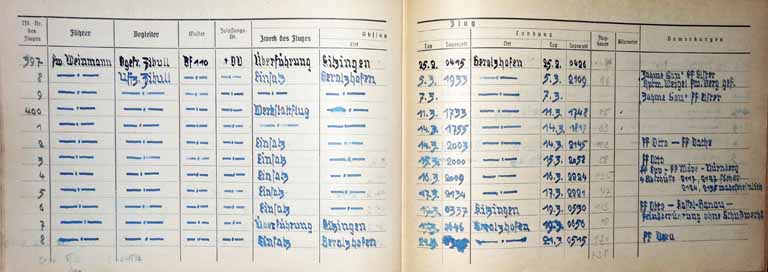 Bomber Command
Bomber Command  |
Aircrew Chronicles
|
Aircrew Losses
|
Nose Art
|
BCATP
|
Lancaster
|
Media
|
Aircrew Chronicles
|
Aircrew Losses
|
Nose Art
|
BCATP
|
Lancaster
|
Media
 Bomber Command
Bomber Command  |
Aircrew Chronicles
|
Aircrew Losses
|
Nose Art
|
BCATP
|
Lancaster
|
Media
|
Aircrew Chronicles
|
Aircrew Losses
|
Nose Art
|
BCATP
|
Lancaster
|
Media
Born in a village near the Black Forest, Emil's dream was to become a fighter pilot and in March 1939, he volunteered to serve with the Luftwaffe. However, he ended up in the army, serving on the western front until March 1941 when he was able to transfer to the German air force. His first flight was 22 May, 1941 in an Focke-Wulf 44 biplane trainer. Much of his training was done on the Arado Ar 96, the Luftwaffe's standard advanced trainer. |
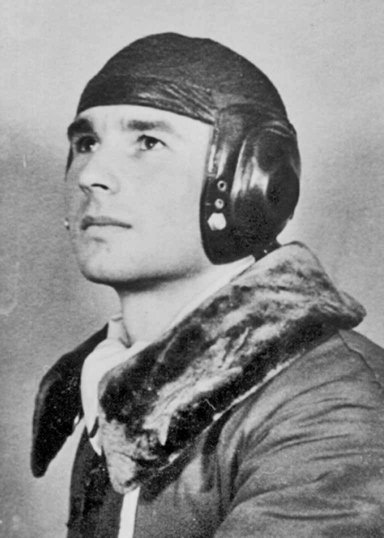
|
During November 1943, Emil made his first flight in a Messerschmitt Bf 110. After graduating from night flying school, he was posted to an airfield in Romania in March 1944. His first combat was a daylight attack on an American B-24.
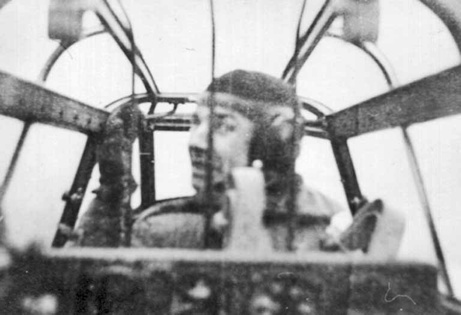 |
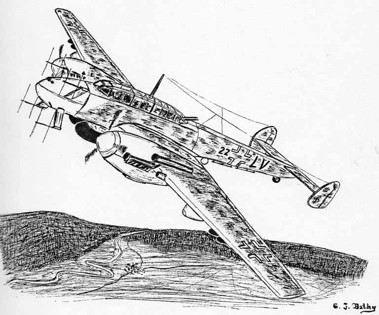 |
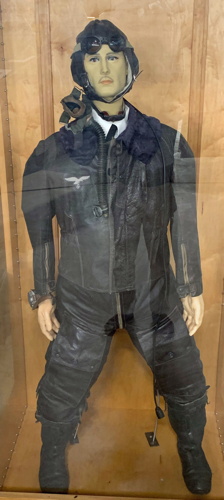 |
Emil's aircraft was hit by one of the Liberator's side-gunners and he struggled back to base on a single engine. The next day he was part of an attack on a formation of American B-17's. Emil watched as another Me 110 attacked. The bomber's crew abandoned the aircraft and Emil saw, "Nine or ten chutes neatly hanging in the sky, like mother's laundry on the clothesline." During August 1944, Emil's unit was transferred to Munich where he began night operations. On 21 November he shot down his first bomber, a Lancaster, and shortly after that, a second. On the night of 24/25 December, while on a night ground attack operation against American troops, Emil strafed a motorized column from an altitude of 100 metres. As he passed over it, a truck exploded, badly damaging his Me 110. Emil was forced to parachute from the aircraft. On 16 March 1945 Emil shot down four bombers within 38 minutes. A fifth barely escaped. One of its air gunners spotted the Me 110. The bomber suddenly banked to the left so sharply that it was practically standing on its wing tip. Emil lost contact as he tried to follow the corkscrewing bomber and was almost flipped over in its propwash. By the time he regained control the bomber was gone. The following morning Emil's Me 110, which carried the markings "OV" and was referred to as "Otto-Viktor," had ten victory marks on her twin fins. |
On 19 March Emil was preparing to land following an operation when he had an encounter with an "Intruder" Mosquito. He had permission to land and was closely following another Me 110. Suddenly an RAF Mosquito flashed in front of him and the Me 110 Emil was following went down in flames. Emil's last flight was a retreat to an airfield east of Munich. Immediately after landing, "Otto-Viktor" ran out of fuel stranding the crew in the middle of the field. Shortly after midnight on 1 May 1945, orders were given to blow up all the aircraft on the field. The war was over for Emil. |
 |
After the war Emil returned to his village and took over the running of the family's sawmill business. He emigrated to Canada in 1957, working in the lumber business in Prince George, BC as a mill-wright. Later he worked for ten years in the Land Titles Office.
Emil died in 1999. Years before, he had given his Luftwaffe dress uniform, flying gear, logbooks, and other related items to his friend Stephen Bathy. In 2011, Mr. Bathy donated these items to the Bomber Command Museum of Canada.
